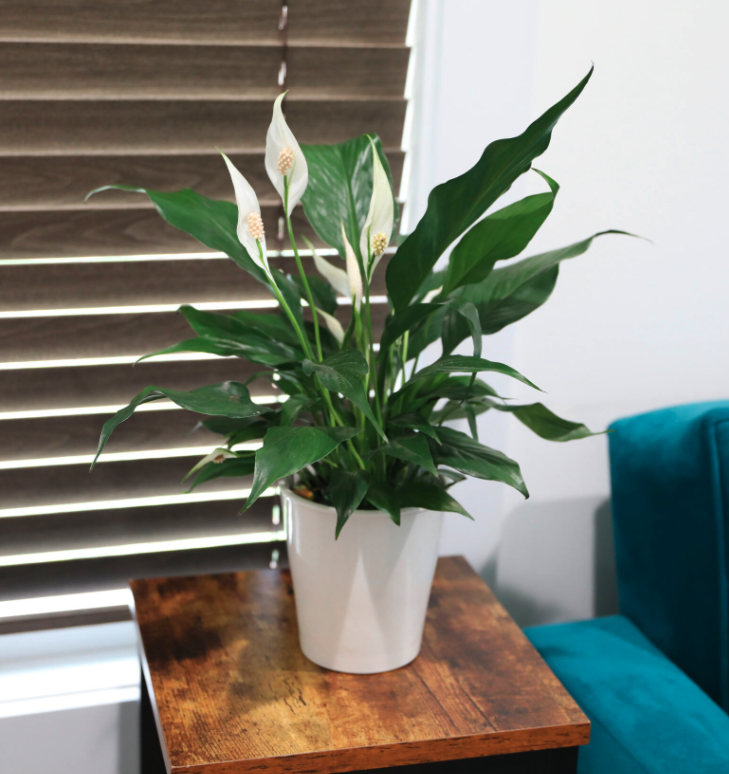Comprehensive Peace Lily Care: A Complete Guide
If you are looking for a plant that combines elegance with easy care, the peace lily is perfect for you. Not only are peace lilies known for their beautiful white blooms and lush green foliage, but they also make excellent air purifiers. Whether you are a seasoned plant enthusiast or new to indoor gardening, understanding the unique needs of your peace lily plant care is crucial for its healthy growth. This guide covers key aspects of peace lily care, including watering and humidity requirements, ideal lighting and placement, and best practices for repotting and fertilizing. With proper care, your peace lily can thrive and enhance your home’s beauty for years to come.
Understanding Peace Lilies
Peace lilies, or Spathiphyllum, are cherished houseplants renowned for their elegant white flowers and lush green leaves. Their glossy foliage and striking blooms not only enhance indoor aesthetics but also contribute to cleaner air, making them a favorite among plant lovers. Typically, peace lilies grow between 1 to 4 feet in height, depending on the variety and growing conditions. Their distinctive flowers emerge from a spathe that resembles a sail, giving them a unique look.
For optimal growth, peace lily care involves providing bright, indirect light. While they can endure low-light conditions, insufficient light will affect their ability to bloom. They thrive in temperatures ranging from 65°F to 85°F, with humidity levels above 50% being beneficial. Well-draining soil and regular watering—allowing the top inch or two of soil to dry out between waterings—are vital for maintaining their health and vibrancy.
Popular peace lily varieties include the 'Mauna Loa', known for its larger flowers and robust growth, the 'Domino', featuring variegated leaves for a unique appearance, and the 'Sensation', boasting large leaves and flowers. Each variety offers its distinct charm, allowing you to select one that complements your decor while enjoying its easy peace lily plant care and beauty.
Watering and Humidity Needs
Proper watering is essential for your peace lily's health. These indoor peace lily plants thrive in consistently moist soil, but it's important to find the right balance. Water your peace lily when the top inch of soil feels dry to the touch, ensuring the water reaches the drainage holes at the bottom of the pot. Avoid letting the plant sit in water, as this can lead to root rot. If your plant has a growing pot within the decorative pot, we recommend removing it after watering to drain any excess water out.
Identifying signs of overwatering and underwatering can prevent stress to your plant. Overwatered peace lilies often display yellowing leaves, wilting, and a mushy stem, while underwatered plants may show drooping leaves and brown tips. Adjust your peace lily care routine accordingly if you notice these symptoms to restore your plant's health.
Humidity is another key factor for optimal growth. Peace lilies prefer humidity levels between 40% and 60%. To maintain adequate humidity, consider placing your peace lily in a bathroom or kitchen, where moisture levels are naturally higher. Alternatively, you can increase humidity by misting the leaves regularly or placing a pebble tray filled with water beneath the pot.
Lighting and Placement
Peace lilies thrive in bright, indirect light but can also tolerate low-light conditions, making them a versatile choice for various indoor spaces. For lush growth and vibrant blooms, place your peace lily in a spot where it receives filtered sunlight. A north or east-facing window is often ideal, providing gentle morning light without the harshness of the afternoon sun.
Avoid placing it directly in front of windows where sunlight can scorch the leaves. Instead, position it a few feet away from windows or in a room with bright, ambient lighting. If natural light is limited, supplement with fluorescent or LED grow lights to ensure your peace lily flourishes.
Direct sunlight can damage peace lilies, leading to leaf burn and too much shade can result in stunted growth and fewer blooms.
Repotting and Fertilizing Peace Lily
Repotting your peace lily is vital for maintaining its health and encouraging growth. Ideally, repot your peace lily every 1-2 years, or when you notice roots tightly bound and growing out of the drainage holes. Spring is the best time for repotting, as the plant enters its active growth phase. To repot, gently remove the plant from its current pot, loosen the roots if they are root-bound, and place it in a new pot slightly larger than the old one. Fill the new pot with fresh soil, ensuring the root ball sits at the same depth as before.
Peace lilies thrive in well-draining potting mixes. A mix containing peat moss, perlite, and pine bark is ideal, providing the right balance of moisture retention and aeration. Avoid heavy soils that retain too much water, as this can lead to root rot.
Fertilizing your peace lily is crucial for promoting lush, healthy growth. During the growing season, from spring to early fall, feed your peace lily with a balanced, water-soluble fertilizer every 4-6 weeks. Dilute the fertilizer to half the recommended strength to prevent over-fertilization, which can cause leaf burn. In winter, reduce or eliminate fertilization, as the plant's growth slows. Make sure you don't water your plant the same weeks you fertilize, as that is too much moisture for your plant.

